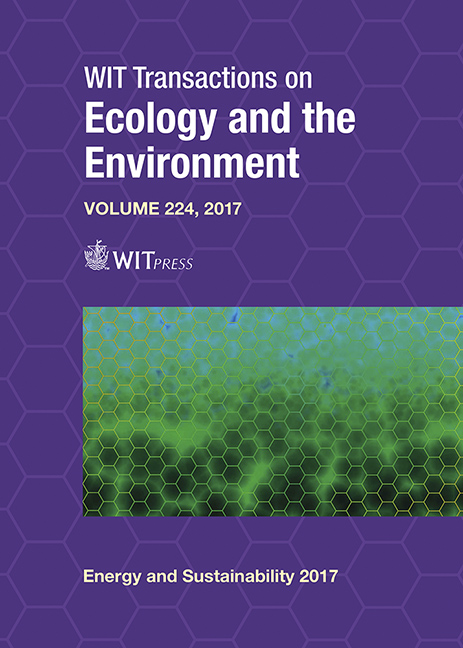FEASIBILITY OF UTILIZATION OF CHARCOAL AND ASHES FROM BIOMASS-ENERGY PROCESSES IN CONSTRUCTION MATERIALS
Price
Free (open access)
Transaction
Volume
224
Pages
9
Page Range
393 - 401
Published
2017
Paper DOI
10.2495/ESUS170371
Copyright
WIT Press
Author(s)
NANCY QUARANTA, MARTA CALIGARIS, GISELA PELOZO, ADRIÁN CRISTÓBAL
Abstract
Biomass-energy processes are those used to obtain energy by the burning or biochemical converting of any organic matter to be used for fuel. In recent years, some materials used as a source for biomass energy have been obtained from the discards of agricultural activities. These include wood, sawdust, corn, sugarcane and rice husks, among others. The processes for converting biomass into energy are numerous. The most commonly used are combustion, co-firing process and pyrolysis. The residual end-products obtained from these processes are highly dependent on the process conditions, especially temperature, pressure and atmosphere. Char and ashes are the most commonly obtained materials. The objective of this work is to analyse the feasibility of reusing these discards of biomass-energy processes, as additions in clay mixtures for the production of ceramic materials for civil construction. For this purpose, charcoal and ashes obtained from various biomasses have been characterized by SEM, EDS, DTA-TGA, XRD, etc. These results, and the determination of the theoretical sintering temperatures by the use of ternary diagrams, lead to the establishment of the feasibility of using these discards in current ceramic industry processes. Charcoal and ashes from sunflower husks, brewery waste and pine sawdust are the materials studied.
Keywords
biomass-energy, construction materials, charcoals and ashes





